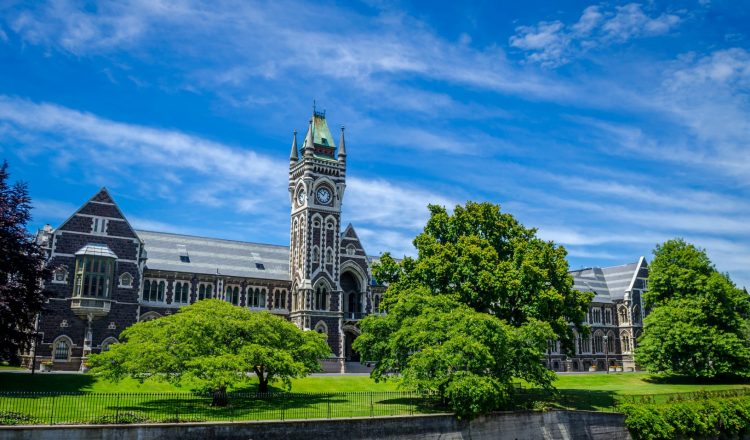Làm việc và học tập
Thời gian của bạn ở New Zealand bằng thị thực sinh viên phải là để học tập. Bạn có thể được phép làm việc bán thời gian nhưng có những quy tắc bạn cần biết. Nếu bạn muốn ở lại New Zealand và làm việc sau khi bạn đã tốt nghiệp, bạn sẽ cần có thị thực phù hợp để làm như vậy.
Làm việc trên thị thực sinh viên
Bạn có thể được phép làm việc bán thời gian tối đa 20 giờ một tuần và toàn thời gian trong tất cả các ngày lễ theo lịch trình và/hoặc trong kỳ nghỉ Giáng sinh và năm mới.
Kiểm tra nhãn thị thực của bạn
Nếu bạn được phép làm việc, quyền làm việc của bạn sẽ được ghi lại trong eVisa hoặc nhãn thị thực trong hộ chiếu của bạn, hoặc là giải thích cho bạn trong một lá thư.
Nếu bạn làm việc khi bạn không được phép, bạn sẽ vi phạm các điều kiện thị thực của bạn. Nếu điều này xảy ra, bạn có thể phải rời khỏi New Zealand. Nếu bạn có thắc mắc về quyền làm việc của mình, hãy liên hệ với cơ quán chính phủ di trú New Zealand.
Học sinh Trung học cơ sở
Bạn có thể làm việc tối đa 20 giờ một tuần trong năm học, và toàn thời gian trong kỳ nghỉ Giáng sinh và năm mới giữa các năm học nếu:
- bạn là 16 tuổi trở lên, và
- học ở lớp 12 hoặc 13.
LƯU Ý: Nếu bạn dưới 18 tuổi, bạn phải có sự cho phép bằng văn bản từ trường của bạn, và cha mẹ hoặc người giám hộ hợp pháp của bạn để làm việc. Bạn không cần sự cho phép bằng văn bản nếu bạn trên 18 tuổi.
Học sinh trung học cơ sở trải nghiệm thực tế
Bạn được phép làm việc, để đáp ứng yêu cầu kinh nghiệm thực tế cho chương trình học ở New Zealand, nếu kinh nghiệm thực tế là một yêu cầu khóa học.
Làm thêm (sinh viên đại học)
Bạn có thể làm việc tối đa 20 giờ một tuần nếu bạn đang học toàn thời gian cho bất kỳ nội dung nào sau đây:
- ít nhất 2 năm;
- Để có bằng cấp của New Zealand đạt điểm theo Hạng mục Di cư có tay nghề cao;
- c\cho chương trình nền tảng ít nhất 1 năm học ở cấp độ 4 trở lên theo Khung trình độ của New Zealand tại một nhà cung cấp giáo dục ở Canterbury.
Làm việc toàn thời gian (sinh viên đại học)
Bạn có thể làm việc toàn thời gian:
- trong thời gian nghỉ học theo lịch trình, nếu bạn đang học toàn thời gian trong ít nhất 1 năm học và khóa học của bạn có giá trị hơn 120 tín chỉ
- trong kỳ nghỉ Giáng sinh và năm mới, nếu bạn đang học toàn thời gian và khóa học của bạn có giá trị từ 120 tín chỉ trở lên.
- Tiến sĩ và thạc sĩ của sinh viên nghiên cứu
- Nếu bạn đang theo học chương trình Thạc sĩ theo chương trình nghiên cứu hoặc bằng tiến sĩ do một cơ sở giáo dục đại học ở New Zealand cấp, thì không có giới hạn về số giờ bạn có thể làm việc.
Làm thêm (sinh viên tiếng Anh)
Bạn có thể làm việc tối đa 20 giờ một tuần trong khi bạn có Visa Sinh viên hợp lệ nếu khóa học của bạn đáp ứng các điều kiện nhất định.
Khóa học từ 6 tháng trở lên – Bạn có thể làm thêm nếu tất cả những điều sau đây áp dụng:
- học của bạn là toàn thời gian
- chương trình học của bạn từ 6 tháng trở lên
- Bạn đang học ngôn ngữ anh
- bạn có chứng chỉ Hệ thống Kiểm tra Anh ngữ Quốc tế với điểm tổng thể là 5.0, không quá 2 tuổi – bạn sẽ cần cung cấp chứng chỉ này trong đơn đăng ký của mình.
Bạn có thể làm việc tối đa 20 giờ một tuần trong khi bạn có Thị thực Sinh viên hợp lệ nếu khóa học của bạn đáp ứng các điều kiện nhất định.
- Việc học của bạn là toàn thời gian
- Chương trình học của bạn là ít nhất 14 tuần liên tiếp
- bạn đang học tiếng Anh
- học tập của bạn là với một trường đại học, hoặc một nhà cung cấp giáo dục chất lượng cao.
Các khóa học ngắn hơn
Khi Immigration New Zealand đánh giá xem bạn có đủ điều kiện nhận quyền làm việc hay không, họ sẽ xem xét bất kỳ nghiên cứu tiếng Anh nào bạn đã thực hiện trên thị thực sinh viên trước đây. Nếu họ có thể tính học tiếng Anh trước đây của bạn vào 14 tuần nếu:
- nghiên cứu mới của bạn theo sau từ nghiên cứu trước đây của bạn
- nghiên cứu là với cùng một nhà cung cấp giáo dục.
Công việc mà bạn không thể làm
Sinh viên quốc tế không được phép tự làm chủ. Bạn phải làm việc cho một người sử dụng lao động và có một thỏa thuận lao động.
Bạn không thể cung cấp dịch vụ tình dục thương mại. Điều này có nghĩa là bạn không thể:
- làm việc như một gái mại dâm
- vận hành một doanh nghiệp mại dâm New Zealand
- đầu tư vào một doanh nghiệp mại dâm.
Để biết thêm thông tin vui lòng truy cập: https://www.immigration.govt.nz/new-zealand-visas

















































